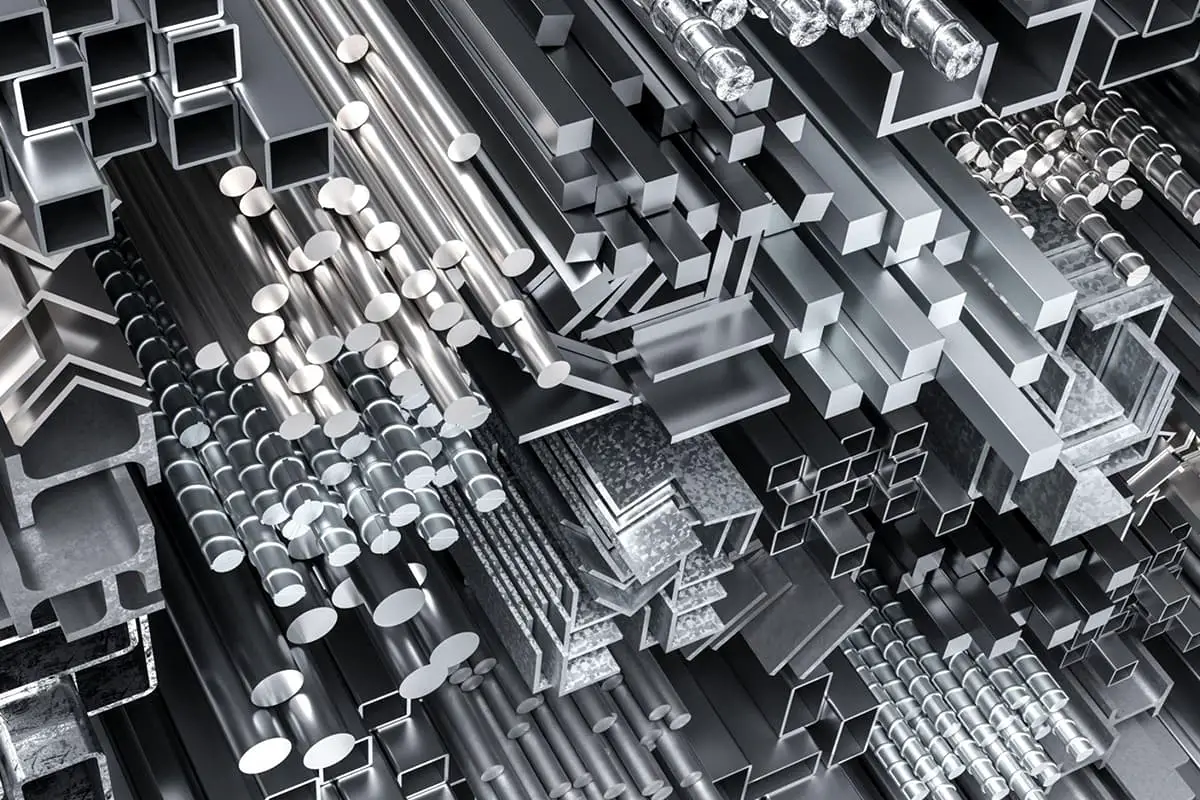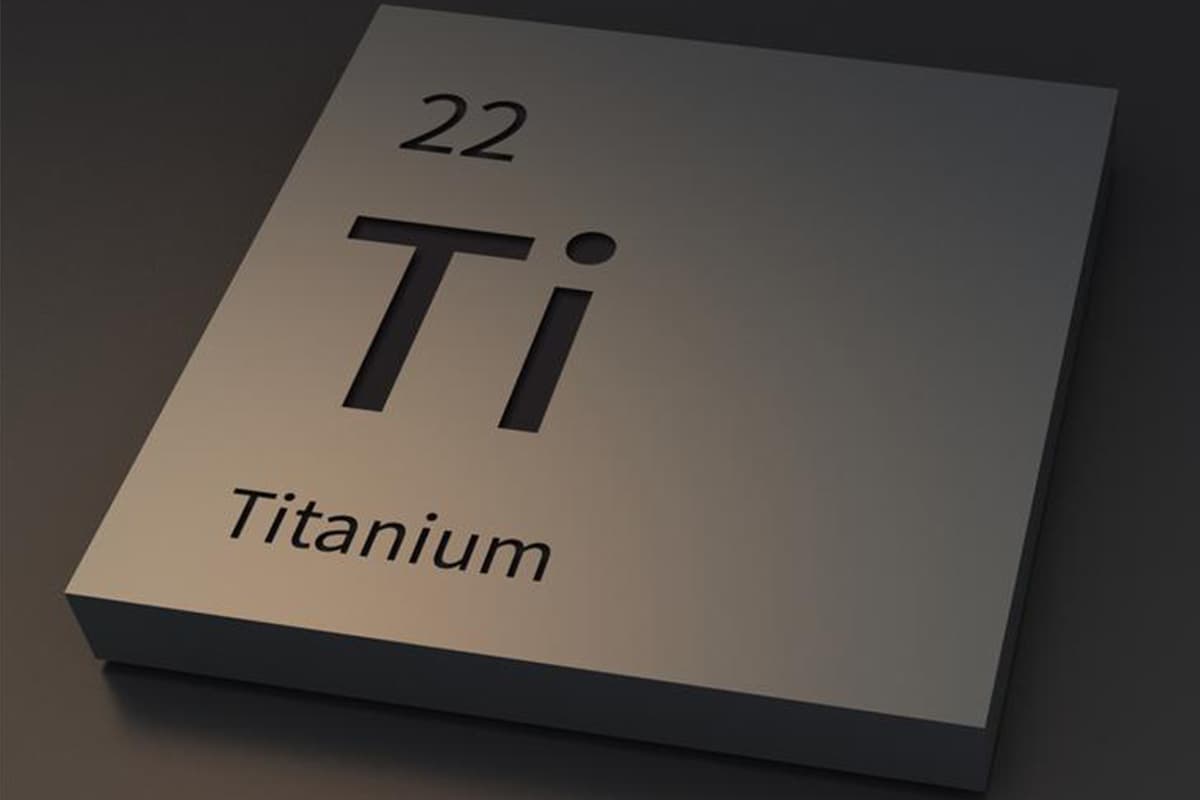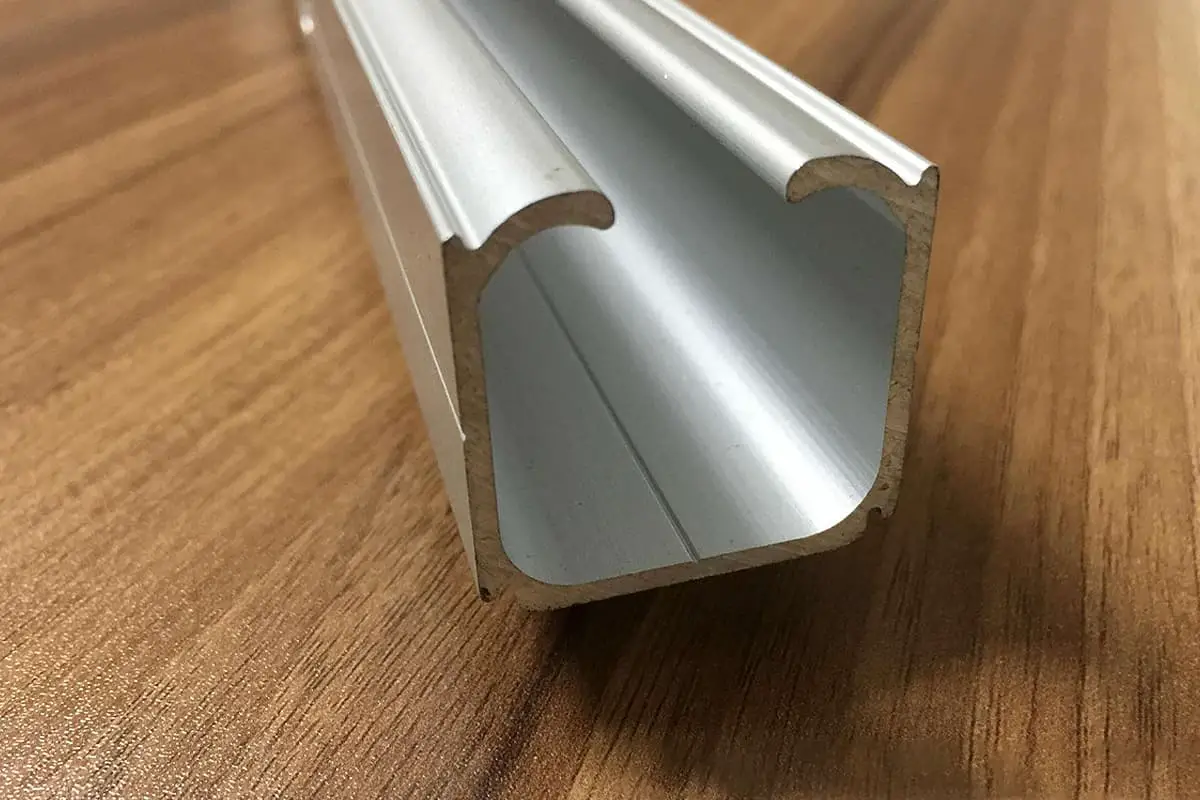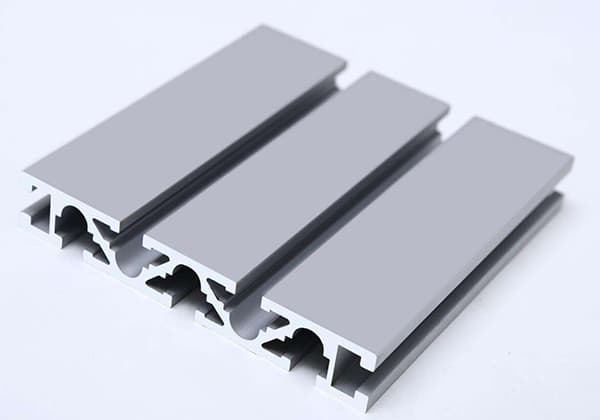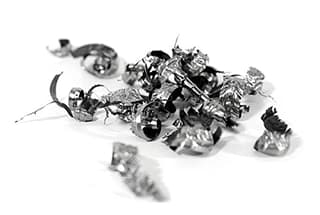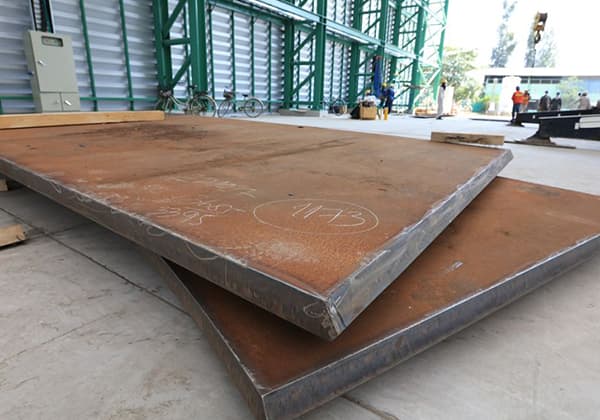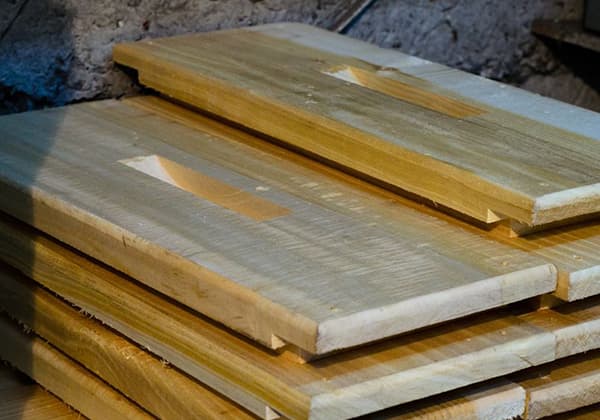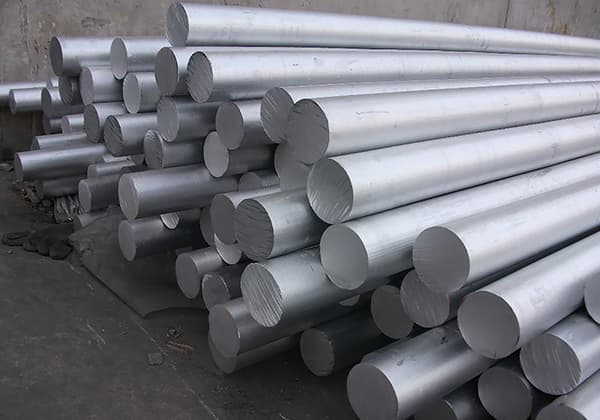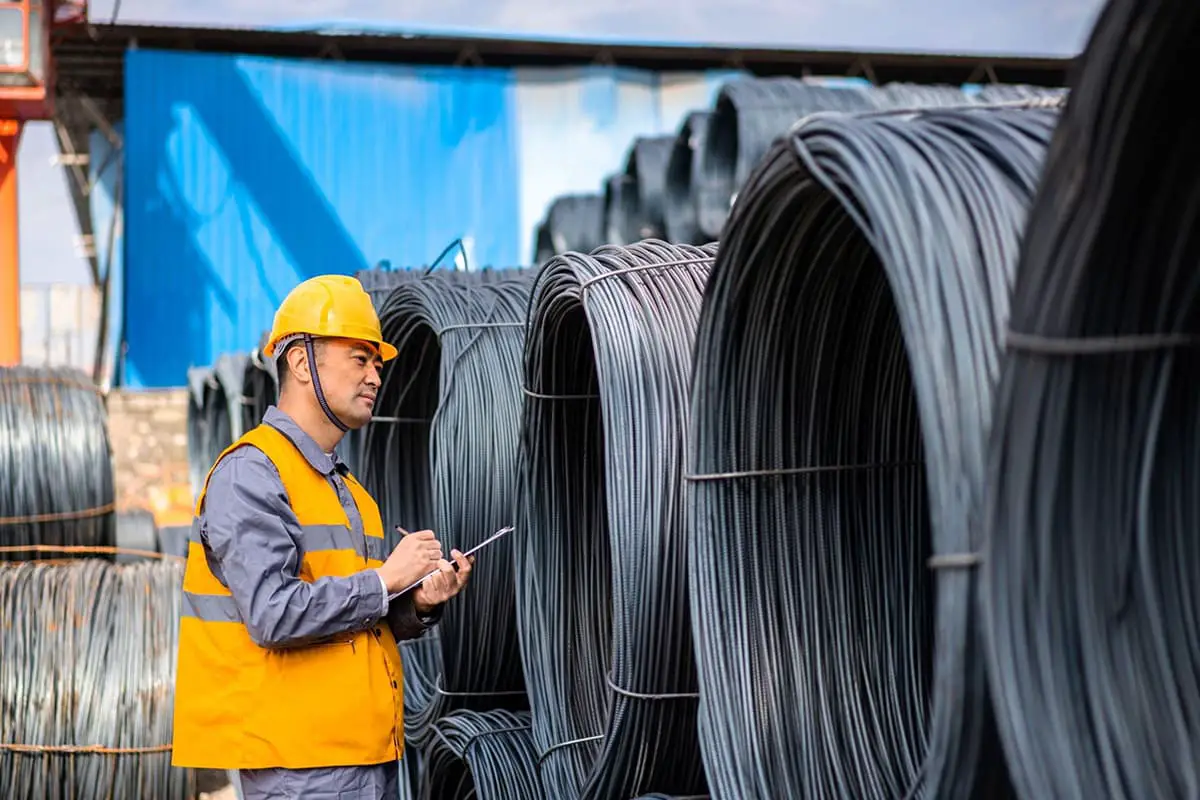
Did you know that tiny elements hidden within steel can drastically change its performance? This blog dives into the fascinating world of alloying elements, revealing how hydrogen, boron, carbon, nitrogen, oxygen, magnesium, aluminum, and silicon shape steel’s strength, durability, and usability. Get ready to uncover the secrets behind these crucial components and their surprising effects on steel.
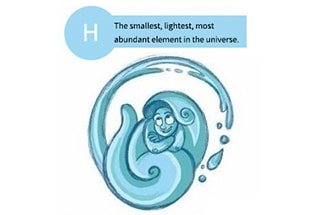

Hydrogen is widely recognized as the most detrimental element in steel, with its presence potentially leading to hydrogen embrittlement and the formation of white spots, both of which significantly compromise steel quality and performance.
Similar to oxygen and nitrogen, hydrogen exhibits extremely low solubility in solid steel. During high-temperature steelmaking processes, hydrogen can dissolve into liquid steel. If not properly managed, it may become trapped during rapid cooling, accumulating within the microstructure and forming high-pressure micropores. This phenomenon can dramatically reduce the steel’s plasticity, toughness, and fatigue strength, potentially resulting in severe cracking and catastrophic brittle fracture.
The susceptibility to hydrogen embrittlement varies across different steel microstructures. Martensitic steels are particularly vulnerable, while ferritic steels generally show higher resistance. The severity of hydrogen embrittlement typically increases with rising hardness levels and carbon content, highlighting the importance of careful material selection and heat treatment processes in hydrogen-rich environments.
Interestingly, while hydrogen’s effects are predominantly negative, it can enhance certain magnetic properties of steel. Specifically, hydrogen improves magnetic permeability, which can be beneficial in some electromagnetic applications. However, this comes at the cost of increased coercivity and iron losses. Studies have shown that hydrogen addition can elevate coercivity by a factor of 0.5 to 2, necessitating a delicate balance in magnetic steel design.
To mitigate hydrogen-related issues, steelmakers employ various strategies such as vacuum degassing, controlled cooling rates, and post-production heat treatments. Advanced non-destructive testing methods, like hydrogen probes and ultrasonic techniques, are crucial for detecting hydrogen-induced defects and ensuring steel integrity in critical applications.

The main function of boron in steel is to significantly enhance its hardenability, allowing for a reduction in the use of other alloying elements such as nickel, chromium, and molybdenum. Typically, boron is added in concentrations ranging from 0.001% to 0.005%, with this small amount capable of replacing 1.6% nickel, 0.3% chromium, or 0.2% molybdenum.
When considering boron as a substitute for molybdenum, it’s crucial to note that while molybdenum mitigates temper embrittlement, boron may slightly promote it. Consequently, a complete replacement of molybdenum with boron is not advisable.
The addition of boron to carbon steel markedly improves hardenability, particularly enhancing the performance of thick steel sections exceeding 20 mm. This property allows 40B and 40MnB steels to serve as viable alternatives to 40Cr steel, while 20Mn2TiB steel can effectively replace 20CrMnTi in carburizing applications.
However, the efficacy of boron diminishes with increasing carbon content in steel. This phenomenon is particularly relevant when selecting boron-containing carburizing steels, as the hardenability of the carburized layer post-treatment will be lower than that of the core material.
For spring steel applications, where full quenching is generally required, boron steel presents an excellent option due to its compact spring cross-section. However, caution is warranted when considering boron additions to high-silicon spring steels, as the interaction can lead to unpredictable results.
Boron also exhibits a strong affinity for nitrogen and oxygen. In rimming steels, the addition of as little as 0.007% boron can effectively eliminate age-hardening effects, improving the steel’s long-term stability.
To optimize the benefits of boron in steel, precise control of composition and processing parameters is essential. Advanced techniques such as vacuum degassing and protective atmosphere heat treatment may be employed to maintain the desired boron content and distribution within the steel matrix.

Carbon is the most critical alloying element in steel after iron, profoundly influencing its mechanical properties, microstructure, and processing characteristics. The carbon content directly impacts the strength, ductility, toughness, and weldability of steel, making it a crucial factor in material selection and manufacturing processes.
In hypoeutectoid steels (carbon content below 0.8%), increasing carbon content leads to higher strength and hardness due to the formation of pearlite and the strengthening effect of interstitial carbon atoms. However, this comes at the cost of reduced ductility and impact toughness, as the steel’s microstructure becomes less malleable.
Conversely, in hypereutectoid steels (carbon content above 1.0%), further increases in carbon content result in decreased strength. This phenomenon occurs due to the formation of a brittle cementite network along prior austenite grain boundaries, which can act as crack initiation sites under stress.
The weldability of steel is significantly affected by carbon content, with a notable decrease in weldability observed when carbon levels exceed 0.3%. This reduction is primarily due to the increased hardenability and susceptibility to cold cracking in the heat-affected zone. As carbon content rises, steel also becomes more prone to cold embrittlement and strain aging, while its atmospheric corrosion resistance diminishes due to the formation of iron carbides that can act as local cathodes, accelerating the corrosion process.

The influence of nitrogen (N) on steel performance is multifaceted, sharing similarities with carbon and phosphorus. As nitrogen content increases, it significantly enhances steel strength while simultaneously reducing plasticity, particularly impacting toughness and weldability. Moreover, nitrogen contributes to increased cold brittleness in steel.
Elevated nitrogen levels exacerbate aging tendencies, cold and hot brittleness, and negatively affect welding and cold bending properties. Consequently, minimizing and controlling nitrogen content in steel is crucial for maintaining optimal performance characteristics.
Industry standards typically recommend limiting nitrogen content to no more than 0.018% in most steel grades. However, when strategically combined with elements such as aluminum, niobium, or vanadium, nitrogen’s adverse effects can be mitigated, and steel performance can be improved. This synergistic interaction allows nitrogen to serve as a beneficial alloying element in certain low-alloy steels.
In specific stainless steel compositions, controlled nitrogen additions can partially substitute for chromium, effectively reducing material costs without compromising performance. For instance, in austenitic stainless steels, nitrogen acts as an austenite stabilizer and contributes to solid solution strengthening, allowing for reduced nickel content.
It’s important to note that precise control of nitrogen levels and its interaction with other alloying elements is critical in achieving the desired balance of properties in steel production. Advanced steel-making techniques, such as vacuum degassing and controlled cooling, play a vital role in managing nitrogen content and optimizing steel performance across various applications.

Oxygen plays a critical role in steel production, but its presence can have detrimental effects on the final product. It is inherently present during steelmaking, and despite deoxidation efforts using elements like manganese, silicon, iron, and aluminum in the final stages, complete removal remains unattainable.
During solidification, dissolved oxygen reacts with carbon in the molten steel, forming carbon monoxide. This reaction can lead to the formation of gas porosity or blowholes, compromising the structural integrity of the steel.
In steel, oxygen primarily exists as oxide inclusions, such as FeO (iron oxide), MnO (manganese oxide), SiO2 (silicon dioxide), and Al2O3 (aluminum oxide). These non-metallic inclusions act as stress concentrators, reducing the steel’s mechanical properties, particularly its strength and ductility. The presence of these oxides significantly impacts fatigue strength and toughness, crucial factors in many engineering applications.
In electrical steels, particularly silicon steel used in transformers and electric motors, oxygen content has pronounced effects. It increases iron losses, thereby reducing energy efficiency. Oxygen also diminishes magnetic permeability and saturation magnetization, key parameters for electromagnetic performance. Furthermore, it accelerates magnetic aging, a time-dependent degradation of magnetic properties, which can shorten the operational lifespan of electrical components.

Magnesium (Mg) plays a crucial role in improving the quality and performance of steel, particularly in controlling inclusions and enhancing mechanical properties. When added in precise amounts, magnesium can significantly modify the microstructure of steel, leading to superior material characteristics.
In steel production, magnesium acts as a powerful deoxidizer and desulfurizer. It effectively reduces the number of non-metallic inclusions, decreases their size, promotes a more uniform distribution throughout the steel matrix, and modifies their morphology to more favorable shapes. These improvements in inclusion characteristics contribute to enhanced steel cleanliness and overall material performance.
For bearing steels, which require exceptional cleanliness and uniform microstructure, trace additions of magnesium have shown remarkable benefits. Magnesium influences the size and distribution of carbides, critical components in bearing steels. By refining carbide structures, magnesium contributes to improved wear resistance, fatigue life, and overall bearing performance.
The impact of magnesium on steel’s mechanical properties is particularly noteworthy. When the magnesium content is precisely controlled between 0.002% and 0.003% by weight, steel exhibits significant improvements in strength without compromising ductility. Specifically, both the tensile strength and yield strength increase by more than 5%, while the material’s plasticity remains essentially unchanged. This unique combination of enhanced strength and maintained ductility is highly desirable in many engineering applications, as it allows for the design of lighter yet stronger components.
It’s important to note that achieving these benefits requires precise control of magnesium addition, as excessive amounts can lead to adverse effects. Therefore, advanced alloying techniques and careful process control are essential in leveraging the full potential of magnesium in steel production.

Aluminum, a potent deoxidizer and alloying element in steel production, demonstrates superior deoxidation capabilities compared to silicon and manganese. Its primary functions in steel metallurgy are multifaceted and critically important for enhancing various steel properties.
The addition of aluminum to steel serves to refine grain structures and stabilize nitrogen, resulting in substantial improvements in impact toughness. This grain refinement mechanism significantly mitigates cold brittleness and reduces age-hardening tendencies, thereby enhancing the steel’s overall mechanical performance and longevity.
In specific steel grades, precise aluminum content is crucial. For instance, grade D carbon structural steel requires a minimum of 0.015% acid-soluble aluminum. In the case of cold-rolled sheet 08AL, designed for deep drawing applications, the optimal acid-soluble aluminum content ranges from 0.015% to 0.065%, ensuring proper formability and strength.
Aluminum also contributes to enhanced corrosion resistance in steel, particularly when used in synergy with other alloying elements such as molybdenum, copper, silicon, and chromium. This combination creates a more robust passive layer, improving the steel’s resistance to various corrosive environments.
In chromium-molybdenum and chromium steels, aluminum additions lead to increased wear resistance. This is achieved through the formation of fine, hard aluminum oxide particles dispersed throughout the steel matrix, which act as obstacles to dislocation movement and enhance surface hardness.
However, it’s important to note that aluminum’s effects are not universally beneficial. In high carbon tool steels, the presence of aluminum can induce brittleness during the quenching process, potentially compromising the steel’s toughness and overall performance.
While aluminum offers numerous advantages, it also presents challenges in steel processing. It can adversely affect thermal processing properties, welding performance, and machinability. These effects are due to the formation of high-melting point aluminum oxide inclusions and the modification of the steel’s microstructure, which can lead to increased tool wear during machining and potential weld defects if not properly managed.

Silicon is a crucial element in steelmaking, serving as an essential reducing agent and deoxidizer. In carbon steels, silicon content typically remains below 0.5%, introduced during the steelmaking process to fulfill these critical roles.
When dissolved into ferrite and austenite, silicon significantly enhances steel’s hardness and strength. Its strengthening effect is second only to phosphorus, surpassing that of manganese, nickel, chromium, tungsten, molybdenum, and vanadium. However, silicon content exceeding 3% can substantially reduce steel’s plasticity and toughness.
Silicon’s influence on steel properties is multifaceted:
In steel production, silicon content is carefully controlled. For rimming steel, it’s limited to <0.07%. When necessary, silicon-iron alloy is added during steelmaking to achieve desired silicon levels and properties.

Phosphorus (P) is introduced into steel primarily through iron ore and is generally considered a detrimental element. While P can increase the strength and hardness of steel, it significantly compromises plasticity and impact toughness.
At low temperatures, P induces “cold brittleness,” severely reducing the steel’s ductility. This phenomenon negatively impacts the steel’s cold workability and weldability. The severity of cold brittleness increases proportionally with P content, necessitating strict control of phosphorus levels in steel production.
Industry standards for P content vary based on steel quality:
Phosphorus exhibits potent solid solution strengthening and cooling hardening effects. When combined with copper, it enhances atmospheric corrosion resistance in high-strength low-alloy steels, albeit at the expense of cold stamping performance. In conjunction with sulfur and manganese, P can improve machinability while exacerbating temper brittleness and cold brittleness sensitivity.
Notably, P improves electrical resistivity and can reduce coercive force and eddy current losses due to its grain-coarsening effect. In weak magnetic fields, steels with higher P content demonstrate improved magnetic induction.
For silicon steels, P content should be limited to ≤0.15% (e.g., 0.07-0.10% in cold-rolled electrical silicon steel). While P doesn’t significantly hinder hot working of silicon steel, it can induce brittleness. Phosphorus is the most potent ferrite-stabilizing element, with its impact on recrystallization temperature and grain growth in silicon steel being 4-5 times that of silicon at equivalent concentrations.
In summary, while P offers some beneficial properties, its detrimental effects on steel’s mechanical properties and processing characteristics necessitate careful control and consideration in alloy design and manufacturing processes.

Sulfur is primarily introduced into steel from iron ore and fuel coke during the steelmaking process. It is generally considered a detrimental element in steel production due to its negative impact on various steel properties.
In steel, sulfur predominantly exists as iron sulfide (FeS). The FeS-Fe system forms a low-melting eutectic compound with a melting point of approximately 985°C (1805°F). Given that the hot working temperature of steel typically exceeds 1150°C (2102°F), FeS compounds can prematurely melt during hot working operations. This premature melting leads to a phenomenon known as “hot shortness” or “hot brittleness,” which significantly reduces the steel’s ductility and toughness, often resulting in cracks during forging and rolling processes.
Furthermore, sulfur adversely affects the weldability of steel and diminishes its corrosion resistance. To mitigate these negative effects, the sulfur content in steel is strictly controlled. For high-quality steels, the sulfur content is typically limited to less than 0.02% to 0.03%. In quality steels, the acceptable range is slightly higher, up to 0.03% to 0.045%, while common structural steels may contain up to 0.055% to 0.07% sulfur.
Despite its generally detrimental effects, sulfur can be beneficial in specific applications. For instance, in the production of free-machining steels, such as certain grades of stainless steel (e.g., AISI 303), a small amount of sulfur (0.2% to 0.4%) is intentionally added to improve machinability and surface finish. This controlled addition of sulfur facilitates chip breaking and reduces tool wear during machining operations. Similarly, some high-speed steels and tool steels utilize sulfur for improved surface characteristics and machinability.
In conclusion, while sulfur is generally considered an impurity in steelmaking, its effects can be both detrimental and advantageous depending on the specific application and steel grade. Careful control of sulfur content is crucial in achieving the desired mechanical properties and performance characteristics in steel products.
K/Na can be utilized as powerful modifiers to spheroidize carbides in white iron, significantly enhancing its toughness by up to 200% while maintaining its characteristic high hardness. This transformation occurs through the promotion of graphite nodule formation and the reduction of brittle carbide networks.
These alkali metals also play a crucial role in refining the microstructure of ductile iron, promoting the formation of more numerous and uniformly distributed graphite nodules. In vermicular (compacted graphite) iron production, K/Na act as stabilizing agents, narrowing the process window and improving consistency in graphite morphology control.
Furthermore, K/Na are highly effective in promoting austenitization in ferrous alloys. A notable example is their impact on austenitic manganese steel, where they can dramatically reduce the required manganese to carbon ratio from the conventional 10:1-13:1 to a more economical 4:1-5:1. This reduction not only lowers alloy costs but also enhances the steel’s wear resistance and work-hardening capabilities, expanding its applications in high-impact and abrasive environments.
Adding calcium to steel is a powerful metallurgical technique that offers numerous benefits across various steel properties and processing stages. Calcium acts as a potent grain refiner, partial desulfurizer, and modifier of non-metallic inclusions, similar to the effects of rare earth elements in steel.
The addition of calcium significantly enhances the steel’s corrosion and wear resistance, while also improving its performance at both high and low temperatures. It boosts critical mechanical properties such as impact toughness, fatigue strength, and plasticity. Furthermore, calcium addition positively influences the steel’s weldability, making it more suitable for various fabrication processes.
In terms of specific applications, calcium-treated steel exhibits superior cold heading characteristics, enhanced shock resistance, increased hardness, and improved contact strength. These properties make it particularly valuable in manufacturing high-performance fasteners, bearings, and other components subjected to severe loading conditions.
For cast steel applications, calcium addition offers multiple advantages. It increases the fluidity of molten steel, leading to improved castability and surface finish of the final product. Notably, it helps eliminate anisotropy in the cast microstructure, resulting in more uniform properties throughout the casting. This uniformity translates to enhanced thermal cracking resistance, superior mechanical properties, and improved machinability of the cast components.
Moreover, calcium-treated steel demonstrates increased resistance to hydrogen-induced cracking and lamellar tearing, both of which are critical factors in certain high-stress applications and welded structures. This improved performance can significantly extend the service life of equipment and tools manufactured from calcium-treated steel.
In steel production, calcium is typically introduced as part of a mother alloy, serving multiple roles: as a deoxidizer to remove harmful oxygen, an inoculant to promote controlled solidification, and a microalloying agent to fine-tune the steel’s microstructure and properties. The precise control of calcium addition and its interaction with other alloying elements is crucial to achieve the desired balance of properties in the final steel product.
Titanium exhibits a strong affinity for nitrogen, oxygen, and carbon, and a stronger affinity for sulfur compared to iron, making it an effective element for deoxidation and for fixing nitrogen and carbon in steel.
As a potent carbide-forming element, titanium readily combines with carbon to form titanium carbide (TiC). This compound possesses a strong binding force, high stability, and resistance to decomposition. TiC dissolution into steel occurs slowly, typically at temperatures exceeding 1000°C (1832°F).
Prior to dissolution, titanium carbide particles play a crucial role in inhibiting grain growth, contributing to the refinement of the steel microstructure.
Titanium’s greater affinity for carbon compared to chromium makes it a valuable addition in stainless steels. It effectively fixes carbon, mitigates chromium depletion at grain boundaries, and consequently reduces or eliminates susceptibility to intergranular corrosion.
As a strong ferrite-forming element, titanium significantly elevates the A1 (eutectoid) and A3 (austenite-to-ferrite transformation) temperatures in steel, influencing its phase transformation behavior.
In low-alloy steels, titanium enhances both strength and ductility. This is achieved through its ability to fix nitrogen and sulfur, form titanium carbides, and promote grain refinement during heat treatment processes such as normalizing. The precipitated carbides significantly improve the steel’s plasticity and impact toughness.
Titanium-containing alloy structural steels demonstrate excellent mechanical properties and processing characteristics. However, a notable drawback is their reduced hardenability, which can affect through-thickness hardening in larger cross-sections.
In high-chromium stainless steels, titanium is typically added at a ratio of 5:1 to carbon content. This addition improves corrosion resistance (particularly against intergranular corrosion), enhances toughness, promotes controlled grain growth at elevated temperatures, and improves the steel’s weldability.
The strategic use of titanium in various steel grades showcases its versatility in tailoring mechanical properties, corrosion resistance, and processing characteristics to meet specific application requirements in industries ranging from automotive to aerospace and chemical processing.
Vanadium exhibits a strong affinity for carbon, nitrogen, and oxygen, forming stable compounds. In steel, it predominantly exists as carbides.
Vanadium’s primary functions in steel include refining the microstructure and grain size, and enhancing hardenability when dissolved in the austenite matrix at elevated temperatures. However, when present as carbides, it can counteract this effect by reducing hardenability. Vanadium also significantly improves the tempering resistance of hardened steel and induces a secondary hardening phenomenon.
The vanadium content in steel is typically limited to 0.5%, with the exception of high-speed tool steels. In conventional low-carbon alloy steels, vanadium acts as a grain refiner, enhancing strength, yield ratio, low-temperature toughness, and weldability. In alloy structural steels, when used in conjunction with manganese, chromium, molybdenum, and tungsten, vanadium can moderate hardenability under standard heat treatment conditions.
For spring and bearing steels, vanadium additions improve strength and yield ratio, particularly the proportional limit and elastic limit. It also mitigates carbon sensitivity during heat treatment, resulting in superior surface quality. In tool steels, vanadium refines the grain structure, reduces susceptibility to overheating, enhances tempering stability, and improves wear resistance, thereby extending tool life.
In carburizing steels, vanadium enables direct quenching post-carburization, eliminating the need for a separate quenching step. Bearing steels containing vanadium and chromium exhibit enhanced carbide dispersion and superior performance characteristics.
Vanadium’s influence on steel properties is highly dependent on its concentration and interaction with other alloying elements, necessitating careful control in steel design and processing to optimize desired properties for specific applications.
Chromium plays a crucial role in enhancing the properties of various steels and alloys. It significantly increases the hardenability of steel and contributes to secondary hardening, improving the hardness and wear resistance of carbon steel without compromising ductility.
When the chromium content exceeds 12%, it imparts excellent high-temperature oxidation resistance and corrosion resistance to steel, while simultaneously enhancing its hot strength. This makes chromium the primary alloying element in stainless steel, acid-resistant steel, and heat-resistant steel.
In carbon steel, chromium improves strength and hardness under rolling conditions, while reducing elongation and cross-sectional shrinkage. However, when the chromium content surpasses 15%, an inverse effect occurs: strength and hardness decrease, while elongation and cross-sectional shrinkage increase. Notably, chromium steel components can achieve high surface quality through grinding processes.
During tempering, chromium’s primary function is to enhance hardenability, resulting in superior mechanical properties after quenching and tempering. In carburizing steels, it forms chromium carbides, significantly improving surface wear resistance. Chromium-bearing spring steels exhibit resistance to decarburization during heat treatment, a valuable characteristic for maintaining desired properties.
For tool steels, chromium improves wear resistance, hardness, and red hardness (hot hardness), while also enhancing tempering stability. This combination of properties makes chromium-alloyed tool steels ideal for high-temperature applications.
In electrothermal alloys, chromium serves to improve oxidation resistance, electrical resistance, and overall strength. These properties are crucial for applications in heating elements and other high-temperature electrical components.
The versatility of chromium as an alloying element underscores its importance in modern metallurgy and materials science, enabling the development of steels and alloys with tailored properties for specific industrial applications.
Manganese (Mn) plays a crucial role in enhancing steel properties, primarily due to its cost-effectiveness and compatibility with iron (Fe). It significantly improves steel strength while minimally affecting plasticity, making it a widely adopted alloying element in the steel industry.
The ubiquity of Mn in steel production is evident across various grades. From low-carbon stamping steels to advanced high-strength steels (AHSS) such as dual-phase (DP), transformation-induced plasticity (TRIP), and martensitic (MS) steels, Mn is a key constituent. Its content varies based on the desired mechanical properties and applications.
In low-carbon steels, Mn content typically remains below 0.5%. However, as strength requirements increase, so does the Mn content. For instance, in ultra-high-strength martensitic steels, Mn levels can reach up to 3%, contributing significantly to their exceptional strength-to-weight ratios.
Mn’s influence extends beyond strength enhancement. It improves steel’s hardenability, enhancing its response to heat treatment processes. This effect is exemplified in the comparison between 40Mn and AISI 1040 steels, where the former exhibits superior hardenability due to its higher Mn content.
Another critical function of Mn is its ability to mitigate the detrimental effects of sulfur (S) in steel. During the steelmaking process, Mn forms high-melting-point manganese sulfide (MnS) inclusions, effectively neutralizing the negative impact of sulfur on steel properties, particularly hot workability and ductility.
However, the addition of Mn requires careful balance. While increasing Mn content can yield higher strength, excessive amounts may compromise steel’s plasticity and weldability. This trade-off necessitates precise control of Mn content based on the intended application and required property profile of the steel.
In modern steelmaking, the optimization of Mn content, often in conjunction with other alloying elements, is crucial for developing steels with tailored property combinations to meet specific industry demands, from automotive lightweighting to high-performance structural applications.
Cobalt (Co) plays a crucial role in enhancing the properties of specialized steels and alloys. In high-speed steels, Co imparts exceptional hot hardness, maintaining cutting tool performance at elevated temperatures during machining operations.
When alloyed with molybdenum in maraging steels, Co significantly improves hardness and overall mechanical properties. This synergistic effect results in ultra-high-strength steels with excellent toughness, widely used in aerospace and defense applications.
Co is an essential alloying element in heat-resistant steels and magnetic materials. In the latter, it contributes to high magnetic saturation and improved Curie temperatures, critical for high-performance permanent magnets and electrical steels.
However, Co’s impact on steel properties is complex. In carbon steels, it can reduce hardenability, potentially compromising comprehensive mechanical properties. This effect is particularly pronounced in medium to high carbon steels, where hardenability is crucial for achieving desired microstructures and properties.
Co strengthens ferrite through solid solution hardening. When added to carbon steels during heat treatments like annealing or normalizing, it increases hardness, yield strength, and tensile strength. However, this comes at the cost of reduced ductility, manifested as decreased elongation and reduction of area.
Increasing Co content in steels generally leads to a reduction in impact toughness. This trade-off between strength and toughness must be carefully balanced in alloy design for specific applications.
Co’s excellent oxidation resistance makes it invaluable in heat-resistant steels and superalloys. Co-based superalloys, particularly in gas turbine applications, exhibit superior high-temperature strength, creep resistance, and hot corrosion resistance, enabling higher operating temperatures and improved engine efficiency.
The beneficial effects of nickel in steel alloys are substantial, encompassing enhanced mechanical properties, improved microstructural characteristics, and superior corrosion resistance. These attributes make nickel-containing steels highly desirable for a wide range of industrial applications.
Nickel significantly enhances steel’s strength-to-toughness ratio, a critical factor in many engineering designs. It dramatically lowers the ductile-to-brittle transition temperature, with values reaching below -100°C at 0.3% Ni content, and plummeting to -180°C when combined with 4-5% cobalt. This remarkable low-temperature toughness expands the operational envelope of nickel-containing steels in cryogenic applications.
The influence of nickel on steel’s hardenability is concentration-dependent. While 3.5% Ni content is insufficient for quench hardening, increasing the nickel content to 8% in chromium steels facilitates martensitic transformation even at very low cooling rates. This characteristic is particularly valuable in the production of large, thick-sectioned components where through-hardening is challenging.
Nickel’s atomic structure, with a lattice constant similar to austenite (γ-Fe), promotes the formation of a continuous solid solution. This metallurgical compatibility enhances steel’s hardenability and contributes to a more uniform microstructure. Furthermore, nickel reduces the critical transformation temperatures and stabilizes austenite, allowing for lower quenching temperatures and improved quenchability.
The synergistic effects of nickel with other alloying elements are noteworthy. Nickel-chromium, nickel-tungsten, and nickel-chromium-molybdenum combinations significantly enhance hardenability. Nickel-molybdenum steels exhibit exceptional fatigue resistance, while nickel steels generally demonstrate superior thermal fatigue properties, making them suitable for components subjected to thermal cycling.
In stainless steels, nickel plays a crucial role in stabilizing the austenitic phase, thereby improving corrosion resistance across a broad spectrum of environments. This makes nickel-containing stainless steels indispensable in chemical processing, food production, and marine applications.
An often-overlooked benefit of nickel in steel is its ability to inhibit grain growth at elevated temperatures. This characteristic helps maintain a fine-grained microstructure, which is essential for preserving mechanical properties and preventing embrittlement during high-temperature service or heat treatment processes.
Copper (Cu) plays a significant role in enhancing the properties of steel, particularly in improving its atmospheric corrosion resistance. When alloyed with low-carbon steel, Cu forms a protective patina on the surface, significantly extending the material’s service life in corrosive environments. The synergistic effect of Cu and phosphorus (P) not only boosts corrosion resistance but also increases the strength and yield ratio of steel without compromising its weldability.
Steel rail containing 0.20% to 0.50% Cu (commonly referred to as U-Cu steel) exhibits remarkable corrosion resistance, with a durability 2-5 times greater than that of standard carbon steel. This makes it particularly valuable in applications exposed to harsh environmental conditions, such as coastal infrastructure or chemical processing facilities.
At higher concentrations, specifically when the Cu content exceeds 0.75%, the steel can undergo an age-hardening effect after solid solution treatment and subsequent aging. This phenomenon can be leveraged to further enhance the material’s strength and hardness through controlled heat treatment processes.
In lower concentrations, Cu’s influence on steel properties is comparable to that of nickel, albeit less pronounced. However, it’s crucial to note that excessive Cu content (typically above 1%) can lead to processing challenges during hot working operations. This is due to the formation of a low-melting-point Cu-rich phase at grain boundaries, potentially resulting in hot shortness or copper embrittlement.
Copper’s benefits extend beyond carbon steels. In austenitic stainless steels, the addition of 2-3% Cu significantly enhances resistance to corrosive media such as sulfuric acid, phosphoric acid, and hydrochloric acid. Moreover, it improves the alloy’s resistance to stress corrosion cracking, a critical factor in demanding applications like chemical processing equipment or marine environments.
Gallium (Ga), a post-transition metal, is located in the p-block of the periodic table and exhibits unique properties in steel metallurgy. In the iron-carbon system, microgallium is soluble in the ferrite (α-Fe) phase, forming a substitutional solid solution. Unlike many alloying elements, gallium does not form carbides, oxides, nitrides, or sulphides in steel, which influences its behavior during heat treatment and service.
In the austenite (γ) + ferrite (α) two-phase region, microgallium exhibits a preferential diffusion from austenite to ferrite due to its higher solubility in the body-centered cubic (BCC) structure of ferrite compared to the face-centered cubic (FCC) structure of austenite. This diffusion behavior leads to an increased concentration of gallium in the ferrite phase, potentially affecting the phase transformation kinetics and final microstructure of the steel.
The primary mechanism by which gallium influences the mechanical properties of steel is through solid solution strengthening. As a substitutional atom in the iron lattice, gallium atoms create local distortions, impeding dislocation movement and thereby increasing the steel’s strength and hardness. However, the magnitude of this strengthening effect is generally less pronounced compared to traditional alloying elements like manganese or molybdenum.
Regarding corrosion resistance, gallium has a minimal impact on the overall corrosion behavior of steel. Unlike elements such as chromium or nickel, which can significantly enhance corrosion resistance through passive film formation, gallium does not substantially alter the electrochemical properties of the steel surface. Its limited effect on corrosion resistance is primarily due to its non-oxide forming nature in steel matrices.
Arsenic (As) in ore presents challenges during iron and steel production, with limited removal achievable through conventional sintering. However, chloridizing roasting offers a more effective method for As elimination. During blast furnace smelting, residual As integrates into the pig iron, necessitating careful management.
When As content in steel surpasses 0.1%, it significantly impacts material properties, increasing brittleness and compromising weldability. To mitigate these adverse effects, stringent control of As levels in ore is crucial, with a recommended maximum threshold of 0.07%.
The presence of As in steel exhibits complex influences on mechanical properties. In low-carbon round steel, it tends to elevate both the yield point (σs) and tensile strength (σb). However, this comes at the cost of reduced ductility, as evidenced by decreased elongation. Moreover, As demonstrates a pronounced negative impact on the room temperature impact toughness (Akv) of carbon round steel, a critical factor for many applications.
These metallurgical considerations underscore the importance of precise As management throughout the ironmaking and steelmaking processes, balancing potential benefits against detrimental effects to ensure optimal steel quality and performance.
Selenium (Se) plays a crucial role in enhancing the machinability of various metals, including carbon steel, stainless steel, and copper. Its incorporation results in improved surface finish, with parts exhibiting a bright and clean appearance. This enhancement is primarily due to selenium’s ability to form easily shearable inclusions, which facilitate chip breaking and reduce tool wear during machining operations.
In the specialized field of high magnetic induction oriented silicon steel, manganese diselenide (MnSe2) is frequently employed as an inhibitor. MnSe2 demonstrates superior inclusion characteristics compared to manganese sulfide (MnS), particularly in its ability to control the growth of initial recrystallization grains. This enhanced inhibition is instrumental in promoting selective secondary recrystallization grain growth. The result is a highly oriented (110)[001] texture, which is crucial for achieving optimal magnetic properties in electrical steels used in transformer cores and other high-efficiency electrical applications. This texture optimization leads to reduced core losses and improved overall transformer efficiency.
Zirconium (Zr) is a potent carbide-forming element, exhibiting properties analogous to niobium, tantalum, and vanadium in steel alloys. Its unique characteristics make it a valuable additive in various high-performance metallurgical applications.
The incorporation of small quantities of Zr yields multiple beneficial effects on steel microstructure and properties:
These effects synergistically contribute to improved low-temperature toughness and superior formability, particularly beneficial for enhancing the stamping performance of steel sheets.
Zr finds extensive application in the production of:
The precise control of Zr content, typically in the range of 0.05-0.15%, is critical to optimize its benefits while avoiding potential issues such as excessive carbide formation or embrittlement.
Niobium (Nb) and tantalum are closely related elements, often found together in nature, and exhibit similar roles in steel metallurgy. Both elements can partially dissolve in solid solution, contributing to the strengthening of the steel matrix.
The presence of Nb significantly enhances the quenching response of steel when dissolved in the austenitic phase. However, when present as carbides or oxide particles, Nb acts as a grain refiner and reduces the hardenability of steel. It also increases the tempering stability and induces a secondary hardening effect, which is beneficial for achieving specific mechanical properties.
Microalloying with niobium offers a unique advantage: it improves steel strength without compromising plasticity or toughness. This characteristic is particularly valuable in modern high-strength low-alloy (HSLA) steels. Nb refines the grain structure, enhances impact toughness, and lowers the ductile-to-brittle transition temperature. When the Nb content exceeds 8 times that of carbon, it can effectively fix almost all carbon in the steel, resulting in excellent hydrogen embrittlement resistance.
In austenitic stainless steels, Nb acts as a stabilizing element, preventing sensitization and intergranular corrosion in oxidizing environments. This is achieved through the formation of stable niobium carbides, which prevent chromium carbide precipitation at grain boundaries. Furthermore, Nb improves the high-temperature performance of steels, particularly creep strength, through its carbon-fixing ability and precipitation hardening effect.
For conventional low-alloy steels, Nb addition leads to improved yield strength and impact toughness while reducing the ductile-to-brittle transition temperature. This combination of properties is particularly advantageous for welded structures. In carburizing and tempering alloy structural steels, Nb increases hardenability while simultaneously enhancing toughness and low-temperature performance. In low-carbon martensitic stainless steels, Nb reduces air hardening tendency, mitigates temper embrittlement, and boosts creep strength, making it a versatile alloying element for various steel grades and applications.
Molybdenum (Mo) significantly enhances the properties of steel, improving its hardenability, heat resistance, and resistance to temper embrittlement. It also increases residual magnetism, coercivity, and corrosion resistance in specific environments.
In quenched and tempered steels, Mo enhances hardenability, allowing for effective heat treatment of large cross-section parts. It improves tempering stability, increasing the steel’s resistance to softening at elevated temperatures. This characteristic enables more efficient stress relief and improved ductility under high-temperature conditions without compromising strength.
For carburizing steels, Mo mitigates the formation of continuous carbide networks at grain boundaries in the carburized layer. This reduces retained austenite content, thereby enhancing surface wear resistance. The refined microstructure results in improved fatigue strength and impact toughness.
Mo is crucial in forging die steels, maintaining consistent hardness at elevated temperatures and enhancing resistance to plastic deformation, thermal fatigue cracking, and abrasive wear. This leads to extended die life and improved part quality in hot forging operations.
In stainless and acid-resistant steels, Mo significantly boosts corrosion resistance, particularly against organic acids (e.g., formic, acetic, oxalic), oxidizing agents (hydrogen peroxide), and various industrial chemicals (sulfuric acid, sulfurous acid, sulfates, acid dyes, bleaching agents). Notably, Mo addition effectively combats pitting and crevice corrosion induced by chloride ions, a common issue in marine and chemical processing environments.
The W12Cr4V4Mo high-speed steel, containing approximately 1% Mo, exhibits exceptional wear resistance, tempering stability, and red hardness (hot hardness). This composition optimizes the balance between carbide formers (W, Cr, V, Mo) and the matrix, resulting in superior cutting performance and tool life in high-speed machining applications.
Tin (Sn) plays a complex role in steel metallurgy, with its effects varying significantly depending on the specific application and alloy composition. In general steel production, Sn is often considered a detrimental impurity due to its potential to induce hot brittleness, temper embrittlement, and cracking. It can adversely affect weldability and is classified as one of the ‘tramp elements’ in steel, alongside elements like copper, arsenic, antimony, and phosphorus.
However, Sn demonstrates beneficial properties in specialized steel applications. In electrical steel, particularly grain-oriented silicon steel, Sn contributes to improved magnetic properties. It achieves this by influencing grain structure and texture development. Sn tends to segregate at grain boundaries, inhibiting grain growth during processing. This grain refinement effect is concentration-dependent; higher Sn content leads to more effective grain size control. The resulting finer grain structure contributes to reduced core losses in electrical steels.
Furthermore, Sn promotes the formation of the favorable {100}<001> Goss texture in grain-oriented silicon steel. This texture enhancement leads to increased magnetic permeability and lower magnetostriction, both desirable properties for transformer core materials. The magnetic induction intensity can be notably improved with controlled Sn additions.
In cast iron production, small amounts of Sn (typically <0.1 wt%) can be advantageous. It enhances wear resistance and influences the fluidity of the molten metal, which is crucial for casting processes. For pearlitic malleable cast iron, which combines high strength with good wear resistance, Sn is added during melting to promote pearlite formation. However, precise control of Sn content is critical, as excessive amounts can interfere with graphite spheroidization in ductile irons.
Sn also finds application in free-cutting steels, where it improves machinability. In these alloys, Sn tends to segregate around inclusions and at grain boundaries. While it doesn’t significantly alter the morphology of sulfide inclusions (a key factor in free-cutting steels), Sn’s segregation behavior enhances chip formation and breakage during machining operations. Optimal machinability improvements are typically observed when Sn content exceeds 0.05 wt%, though the exact amount depends on the specific steel grade and other alloying elements present.
In conclusion, while Sn is generally undesirable in bulk steel production, its targeted use in specialized steel grades can yield significant performance benefits. The key lies in precise composition control and understanding the complex interactions between Sn and other alloying elements in the steel microstructure.
After incorporating antimony (Sb) into high magnetic orientation silicon steel, it refines the grain size during both primary and secondary recrystallization processes. This refinement leads to a more complete secondary recrystallization, resulting in enhanced magnetic properties.
Following cold rolling and decarburization of Sb-containing steel, the texture components {110}<115> and {110}<001> are strengthened. These orientations are favorable for promoting secondary recrystallization, consequently increasing the number of secondary recrystallization nuclei. This microstructural modification contributes to improved magnetic performance and overall material quality.
In Sb-containing structural steels designed for welding applications, Sb exhibits a unique precipitation behavior under austenitizing temperatures. It preferentially precipitates around manganese sulfide (MnS) inclusions and along prior austenite grain boundaries. This Sb enrichment surrounding MnS inclusions serves a dual purpose: it refines the steel’s microstructure and enhances its toughness. The refined microstructure contributes to improved mechanical properties, while the increased toughness is particularly beneficial for welded structures, potentially reducing the risk of brittle fracture in the heat-affected zone.
Tungsten (W) in steel exhibits dual functionality: it partially dissolves in iron to form a solid solution while also producing carbides. Its effects are comparable to those of molybdenum (Mo), though generally less pronounced when compared on a per-weight basis.
The primary contributions of W to steel’s properties include enhanced tempering stability, improved red hardness (hot hardness), increased heat resistance, and superior wear resistance, primarily due to the formation of tungsten carbides. These characteristics make W-alloyed steels particularly suitable for tool applications, such as high-speed steels and hot forging steels.
In high-quality spring steels, W acts as a refractory carbide former, which inhibits the coarsening of carbides and maintains high-temperature strength at elevated temperatures. Additionally, W reduces the steel’s sensitivity to overheating, improves hardenability, and increases overall hardness.
For instance, the 65SiMnWA spring steel achieves high hardness even after hot rolling and air cooling. Spring steels containing W, with cross-sections up to 50mm², can be oil-quenched to achieve high hardness and bear substantial loads while maintaining heat resistance up to 350°C.
The 30W4Cr2VA high-strength, heat-resistant spring steel exemplifies the benefits of W addition. This grade exhibits excellent hardenability and can achieve tensile strengths of 1470-1666 MPa after quenching at 1050-1100°C and tempering at 550-650°C. Its primary application is in manufacturing springs designed for high-temperature environments up to 500°C.
W significantly enhances the abrasion resistance and cutting performance of steels, making it a crucial alloying element in tool steels. The formation of hard, stable tungsten carbides contributes to improved wear resistance and edge retention in cutting tools, especially those operating at high temperatures or under severe conditions.
In summary, the addition of tungsten to steel imparts a combination of high-temperature strength, wear resistance, and enhanced cutting properties, making W-alloyed steels indispensable in various high-performance applications, particularly in the tool and spring steel sectors.
Lead (Pb) enhances the machinability of steel by acting as an internal lubricant during cutting operations. Steel containing controlled amounts of lead exhibits excellent mechanical properties and remains amenable to heat treatment processes. However, due to environmental concerns and the detrimental effects on the recycling process of scrap steel, the use of lead as an alloying element has been progressively phased out in favor of more eco-friendly alternatives.
The limited solubility of lead in iron (Fe) prevents the formation of solid solutions or intermetallic compounds. Instead, lead segregates to grain boundaries, adopting a globular morphology. This segregation can induce temper embrittlement in steel within the critical temperature range of 200-480°C (392-896°F). Moreover, the presence of lead at grain boundaries can significantly compromise weldability, leading to the formation of cracks during welding processes. These metallurgical phenomena necessitate careful consideration in alloy design and processing parameters for leaded steels, particularly in applications involving elevated temperatures or welding operations.
The cutting performance of steel can be significantly enhanced by incorporating 0.1-0.4% bismuth (Bi) into free-cutting steel compositions. When uniformly distributed within the steel matrix, Bi particles melt upon contact with the cutting tool, acting as an effective lubricant. This mechanism prevents tool overheating, enables higher cutting speeds, and improves overall machinability.
Recent developments have seen the addition of Bi to various stainless steel grades to enhance their machining characteristics. In free-cutting steels, Bi can exist in three distinct forms: as independent particles within the steel matrix, encapsulated by sulfide inclusions, or at the interface between the steel matrix and sulfide phases.
Research has shown that increasing Bi content in S-Bi free-cutting steel ingots leads to a reduction in the deformation rate of manganese sulfide (MnS) inclusions. The presence of Bi-metal in steel effectively inhibits sulfide deformation during the forging process of steel ingots, contributing to improved microstructural control.
In cast iron applications, the addition of 0.002-0.005% Bi has demonstrated multiple benefits. It enhances the casting performance of malleable cast iron, increases whitening tendency, reduces annealing time, and optimizes the ductility of the final components. Furthermore, introducing 0.005% Bi to nodular cast iron results in improved seismic resistance and increased tensile strength.
However, the incorporation of Bi into steel presents technical challenges due to its high volatility at typical steelmaking temperatures (around 1500°C), making uniform distribution difficult. To address this issue, international manufacturers have developed innovative approaches, such as using Bi-Mn alloy plates with a lower melting point of 1050°C as additives. Despite these advancements, the utilization rate of Bi remains relatively low, at approximately 20%.
In the field of electrical steels, major steel producers like Nippon Steel & Sumitomo Metal, POSCO, and others have reported that Bi additions can significantly improve the magnetic properties of grain-oriented silicon steel, particularly the B8 value (magnetic induction at 800 A/m). Notably, over one hundred high-magnetic oriented silicon steel patents involving Bi additions have been filed by Nippon Steel & Sumitomo Metal and JFE. These innovations have resulted in magnetic induction values reaching 1.90T, with some exceptional cases achieving up to 1.99T, marking substantial improvements in electrical steel performance.
Rare earth elements (REEs) encompass the lanthanide series (atomic numbers 57-71), as well as scandium (21) and yttrium (39), totaling 17 elements. These elements share similar chemical properties, making their separation challenging. Mixed rare earths, which are more cost-effective, refer to unseparated REE combinations.
In steel production, REEs serve multiple functions:
REEs, along with Ca, Ti, Zr, Mg, and Be, are highly effective in modifying sulfide inclusions. When added in appropriate quantities, they transform oxide and sulfide inclusions into small, dispersed, globular particles. This transformation mitigates the detrimental effects of manganese sulfide (MnS) and other inclusions on steel properties.
In typical steel production, sulfur exists primarily as iron sulfide (FeS) and manganese sulfide (MnS). High manganese content promotes MnS formation, which, despite its high melting point and ability to prevent hot shortness, can elongate during deformation processing. These elongated MnS inclusions significantly reduce steel’s plasticity, toughness, and fatigue strength. REE additions are crucial in modifying these inclusions for improved deformation processing.
REEs also enhance steel’s oxidation and corrosion resistance, surpassing the effects of silicon, aluminum, and titanium. They improve steel fluidity, reduce non-metallic inclusions, and promote a dense, pure microstructure. The primary roles of REEs in steel are purification, inclusion modification, and alloying.
As oxygen and sulfur content control in steel production improves, traditional purification and inclusion modification techniques are becoming less critical. However, novel purification technologies and alloying effects utilizing REEs are gaining prominence. For instance, REEs increase the oxidation resistance of ferrochrome aluminum alloys and maintain fine grain structures at elevated temperatures. This results in improved high-temperature strength and significantly extended service life of electrothermal alloys.
In summary, rare earth elements play a multifaceted role in modern steel production, offering unique benefits in terms of microstructural control, inclusion modification, and property enhancement. Their application continues to evolve as steel production techniques advance, opening new avenues for high-performance steel development.

